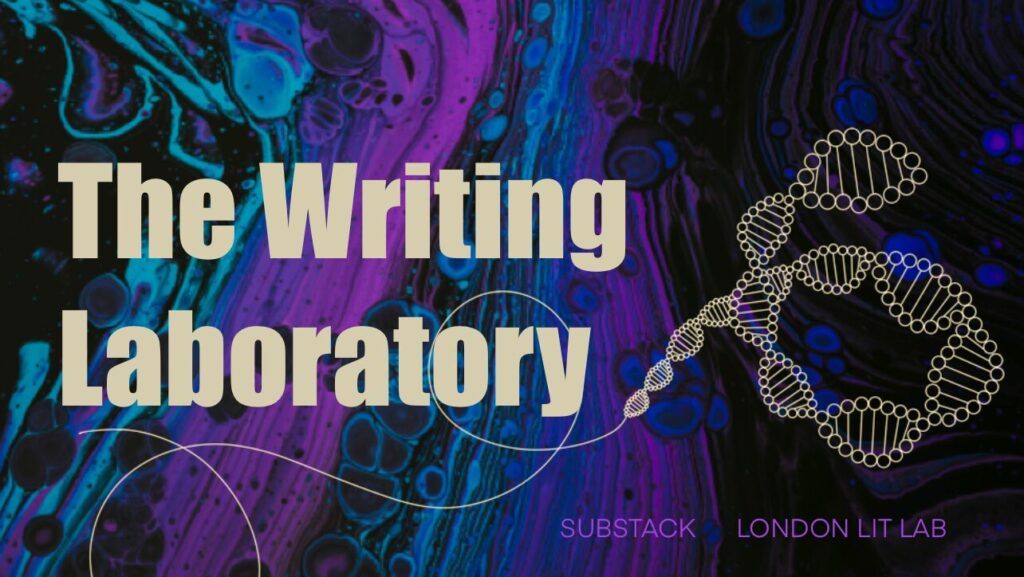Kylie Fitzpatrick joined London Lit Lab in 2021 and teaches our online course, Finding Your Voice: Reclaiming the Inner Writer.
What were your writerly beginnings?
My first novel, Tapestry, was originally conceived as a screenplay, probably because I was working in film and television and operating script formatting software on a drama series at the time. I shared my ‘ambitious’ (I heard that word a lot) ideas with a producer friend – a story about the making of the enigmatic Bayeux Tapestry. His advice was that it sounded more like a novel than a screenplay, which changed everything.
When did you first realise that you wanted to turn your historical research into creative writing? And why historical not contemporary fiction?
Winding back a little to before I started writing Tapestry – before the first of many many drafts, I was asked to do some script research on a proposed series about the lead-up to the Norman Conquest, a time in which three powerful men: one Saxon, one Scandinavian and one Norman, all had designs on the English throne.
I didn’t have a history degree or any real experience as a researcher, only an inexplicable preoccupation with things medieval (I wore a lot of velvet and brocade in those days). My research task was to support the screenwriter by finding out as much as I could about the significant female figures of the period. The series was never made, but I had discovered not only a cast of remarkable women but also the Bayeux Tapestry. I was hooked.
Because my first novel was an historical mystery, there was an expectation that I would write something else in a similar vein, and I was contracted to do exactly this. Then contracted to write another, and so on. In a sense I didn’t have any choice but to keep writing historical novels, but I also knew that this was right for me.
My imagination comes to life when I am in old buildings or pick up a piece of antique jewellery or read about something that happened two hundred year ago. Tapestry actually had what is called a dual narrative – two time frames – so there is a contemporary storyline alongside the eleventh century narrative. This actually made it quite difficult to sell to some publishers because they didn’t know how to categorise the hybrid writing style. I learnt a lot.
How did you come to realise the importance of an authentic voice in writing? And what is this exactly?
Over the years that I’ve been writing and working with writers, both as a tutor and an editor, I’ve become fascinated by the less conscious parts of the mind and how writers are drawn – sometimes unintentionally – to explore themes which have deep, personal meaning. Along with all the learning we do about technique and writing craft, there is something else – something mysterious about writing; discoveries to be made about who we are and what is important to us; layers of consciousness to be excavated.
To me ‘voice’ is a term that relates to the inner, like spirit and psyche and soul. Like these words, voice is evasive and undefinable because it should be. I think the purpose of writing is the same as the reason for reading: to keep discovering more about being human.
Could you talk about a recent revelation you’ve had about your work or process?
I’m intrigued by the way writing – my own and others’ – draws on the whole psyche; the totality of mind, both interiority and exteriority, and that this is reflected in the characters we write. We take in experiences, images, observations from the exterior world, process them into a story and send them back out into the world. When we get the balance right in writing we can recreate an entire world for a reader to climb into. And somehow, writing helps us to get the balance right in life. Does life reflect art or art reflect life? My answer is yes.
As a creative writing teacher for many years, what do you think is one of the biggest pitfalls emerging writers can fall into?
All writers are different and there are many pitfalls! But there are also many discoveries to be made and many delights. The aspect of writing that I seem to end up talking to emerging fiction writers about most, is point of view and how to ‘inhabit’ the viewpoint of another. Point of view is a combination of empathy and curiosity, as well as a technique.
Using point of view effectively requires that we imagine ourselves under the skin of another. The bond between the writer and the viewpoint character, or narrator, will then be mirrored in the bond between the narrator and the reader. So the more deeply we can sense the inner worlds of the characters we create, the more immersed our readers will be.
What are you currently working on?
I’ve just finished a draft of a novel set in 1919 in far-northern Queensland, Australia. This is immediately after WWI, which is quite contemporary for me! At this time there was a significant population of Russian immigrants in Queensland, with a taste for Communism and revolution. Add to this thousands of broken, morphine-addicted soldiers returning home from the Eastern and Western fronts, to whom any foreigners were still firmly the enemy, and you have a very rich backdrop for historical fiction.
What has struck me most about developing this novel, and researching historical stories generally, is the way human history continues to repeat itself. Even one-hundred years after the Great War, thought to be the one that would end all wars, we are still hell-bent on acquisition and intolerant of difference.

